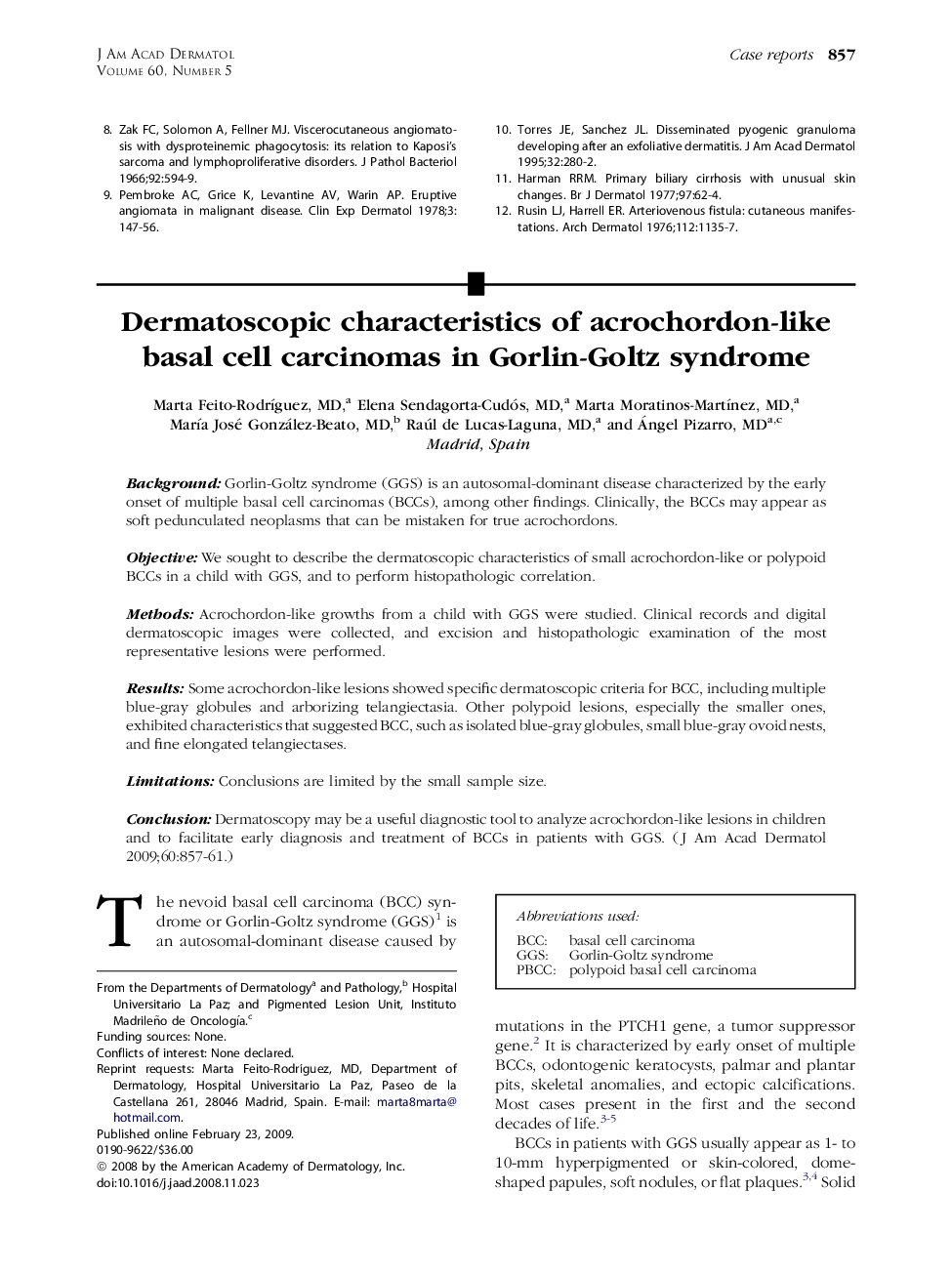| Article ID | Journal | Published Year | Pages | File Type |
|---|---|---|---|---|
| 3210141 | Journal of the American Academy of Dermatology | 2009 | 5 Pages |
BackgroundGorlin-Goltz syndrome (GGS) is an autosomal-dominant disease characterized by the early onset of multiple basal cell carcinomas (BCCs), among other findings. Clinically, the BCCs may appear as soft pedunculated neoplasms that can be mistaken for true acrochordons.ObjectiveWe sought to describe the dermatoscopic characteristics of small acrochordon-like or polypoid BCCs in a child with GGS, and to perform histopathologic correlation.MethodsAcrochordon-like growths from a child with GGS were studied. Clinical records and digital dermatoscopic images were collected, and excision and histopathologic examination of the most representative lesions were performed.ResultsSome acrochordon-like lesions showed specific dermatoscopic criteria for BCC, including multiple blue-gray globules and arborizing telangiectasia. Other polypoid lesions, especially the smaller ones, exhibited characteristics that suggested BCC, such as isolated blue-gray globules, small blue-gray ovoid nests, and fine elongated telangiectases.LimitationsConclusions are limited by the small sample size.ConclusionDermatoscopy may be a useful diagnostic tool to analyze acrochordon-like lesions in children and to facilitate early diagnosis and treatment of BCCs in patients with GGS.
